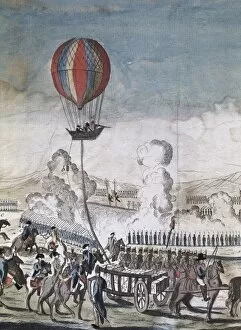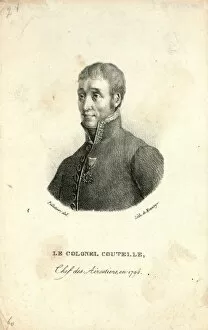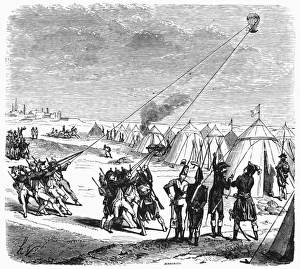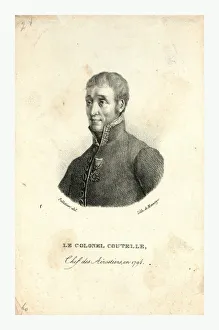Coutelle Collection
Jean-Marie-Joseph Coutelle, a renowned French engineer and pioneer of ballooning
All Professionally Made to Order for Quick Shipping
Jean-Marie-Joseph Coutelle, a renowned French engineer and pioneer of ballooning, played a significant role in the advancement of military aerial reconnaissance during the late 18th century. His innovative designs and techniques revolutionized the field of aviation. One notable achievement was his involvement in the operation du vernissage d'un ballon captif militaire at Meudon in 1794. Through his collaboration with Conte, they successfully launched a military captive balloon using their groundbreaking methods. This engraving captures this historic moment, showcasing Coutelle's expertise and dedication to pushing boundaries. Coutelle's contributions extended beyond mere experimentation. In 1794, he piloted the balloon Entreprenant during the Battle of Fleurus, providing crucial surveillance from above for strategic advantage. This bold move demonstrated his courage and commitment to utilizing balloons as effective tools in warfare. His brilliance did not go unnoticed; even years later, Jean-Marie-Joseph Coutelle remained an influential figure within scientific circles. A head-and-shoulders portrait immortalizes him as a distinguished scientist and engineer who left an indelible mark on history. Coutelle's visionary mindset led him to design hydrogen balloons specifically tailored for military purposes. These advancements paved the way for future developments in aerial warfare technology by combining both functionality and innovation. The legacy of Jean-Marie-Joseph Coutelle lives on through various airship projects bearing his name like Zodiac Commandant Coutelle airship—an homage to his pioneering spirit that continues to inspire generations of engineers and aviators alike. In summary, Jean-Marie-Joseph Coutelle's remarkable achievements propelled him into greatness as one of France's most esteemed engineers and scientists during his time. From launching military captive balloons to leading reconnaissance missions during battles, he forever changed how we perceive aerial warfare. His unwavering dedication has undoubtedly shaped our modern understanding of aviation history while leaving an enduring impact on the field of ballooning.














